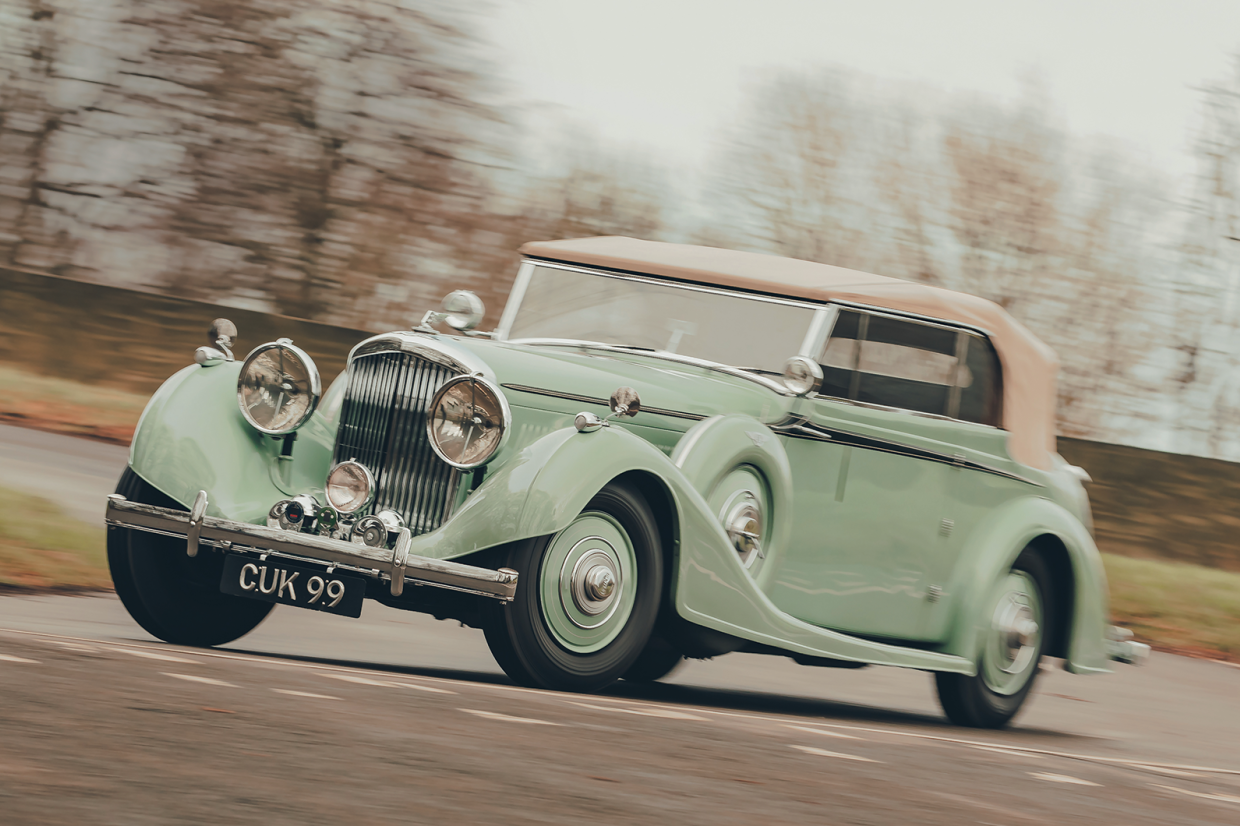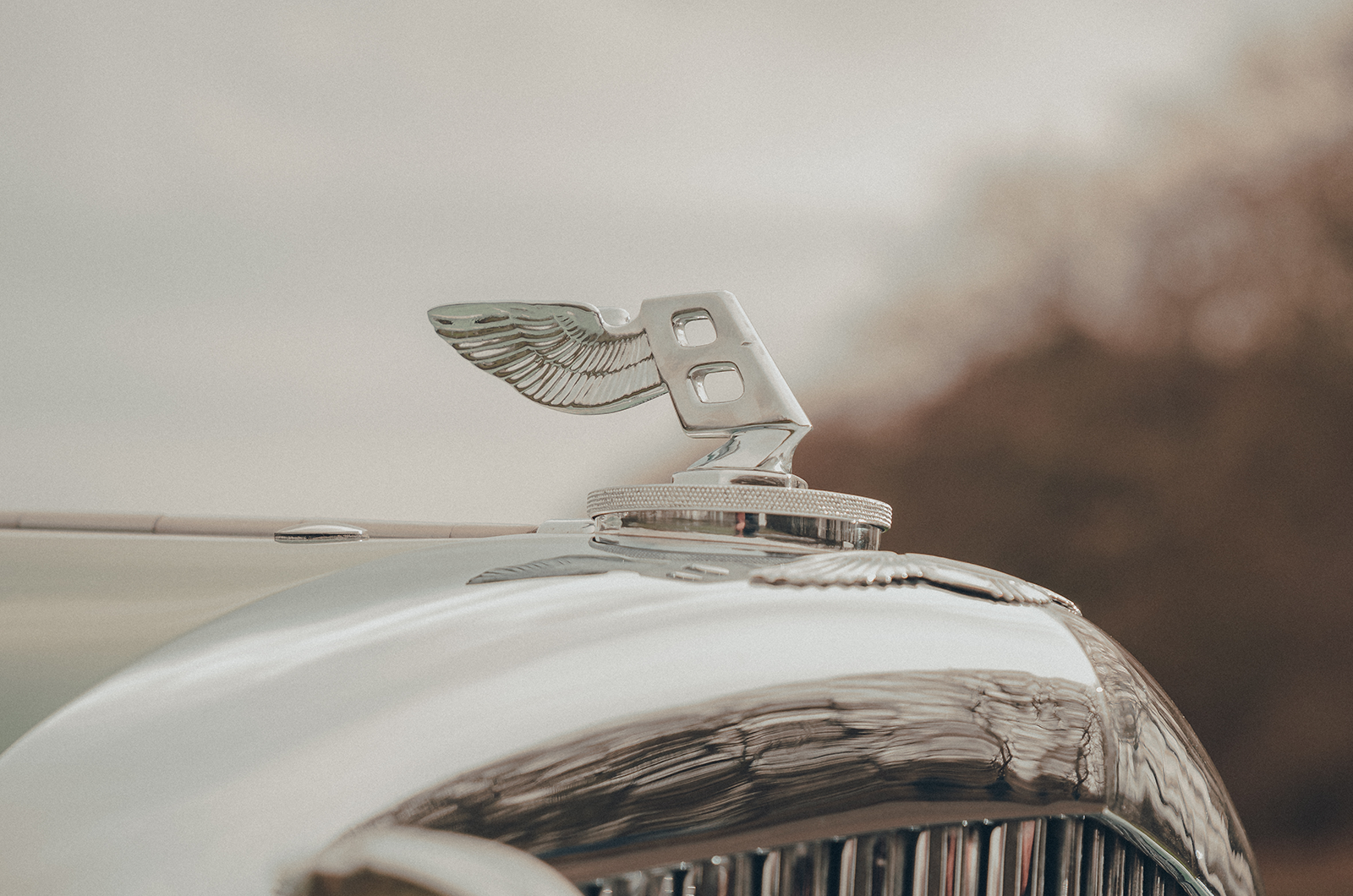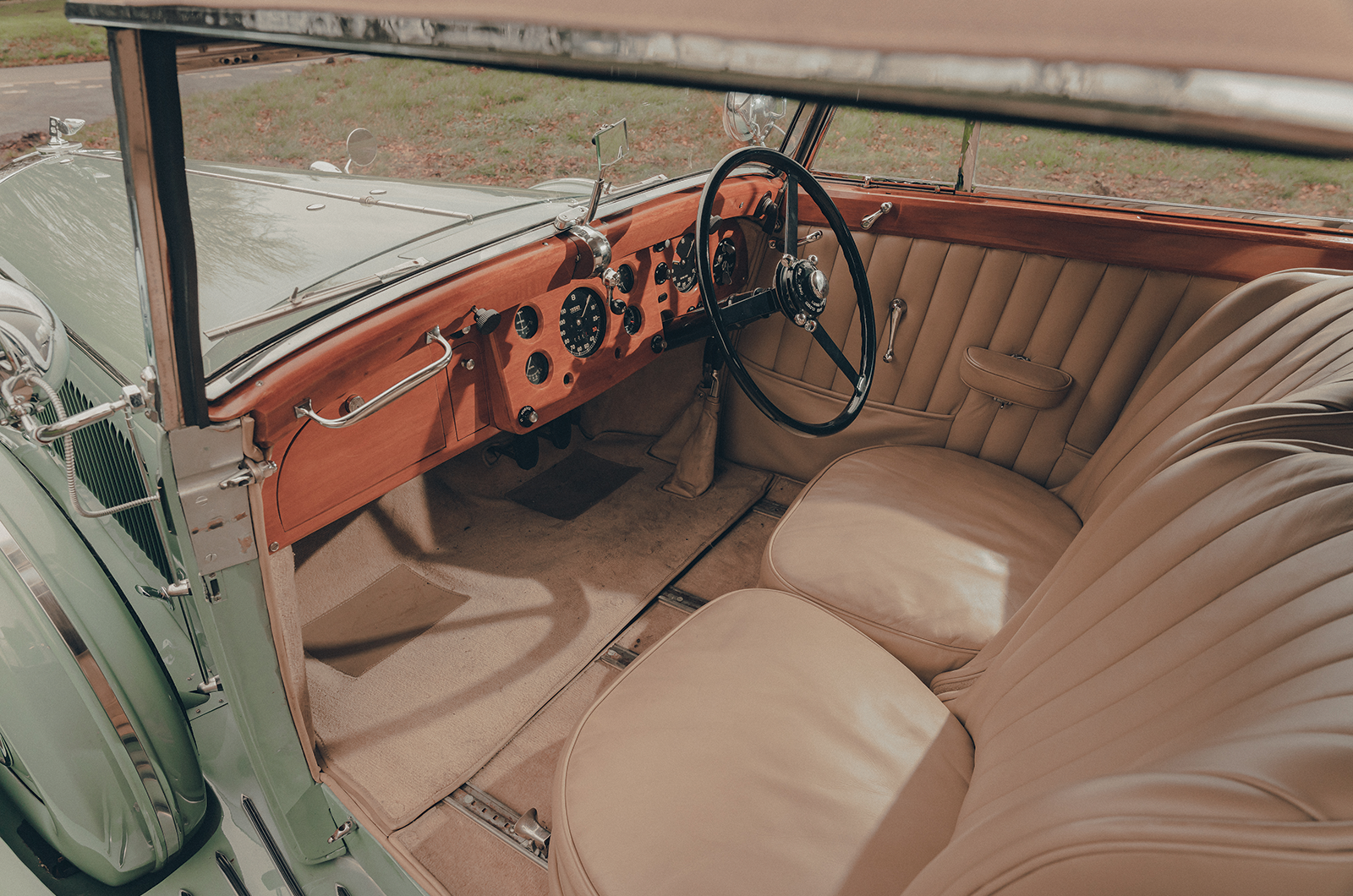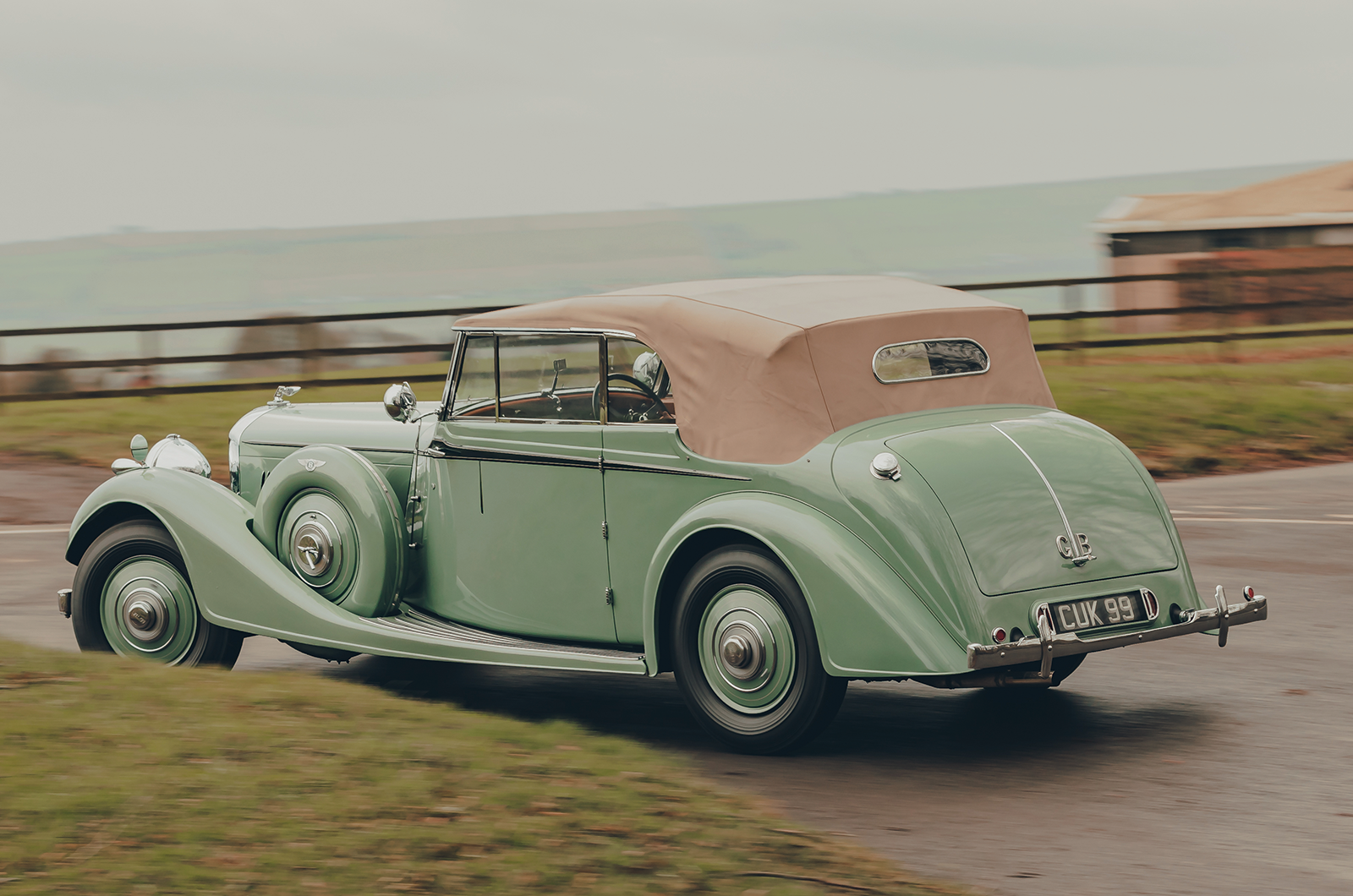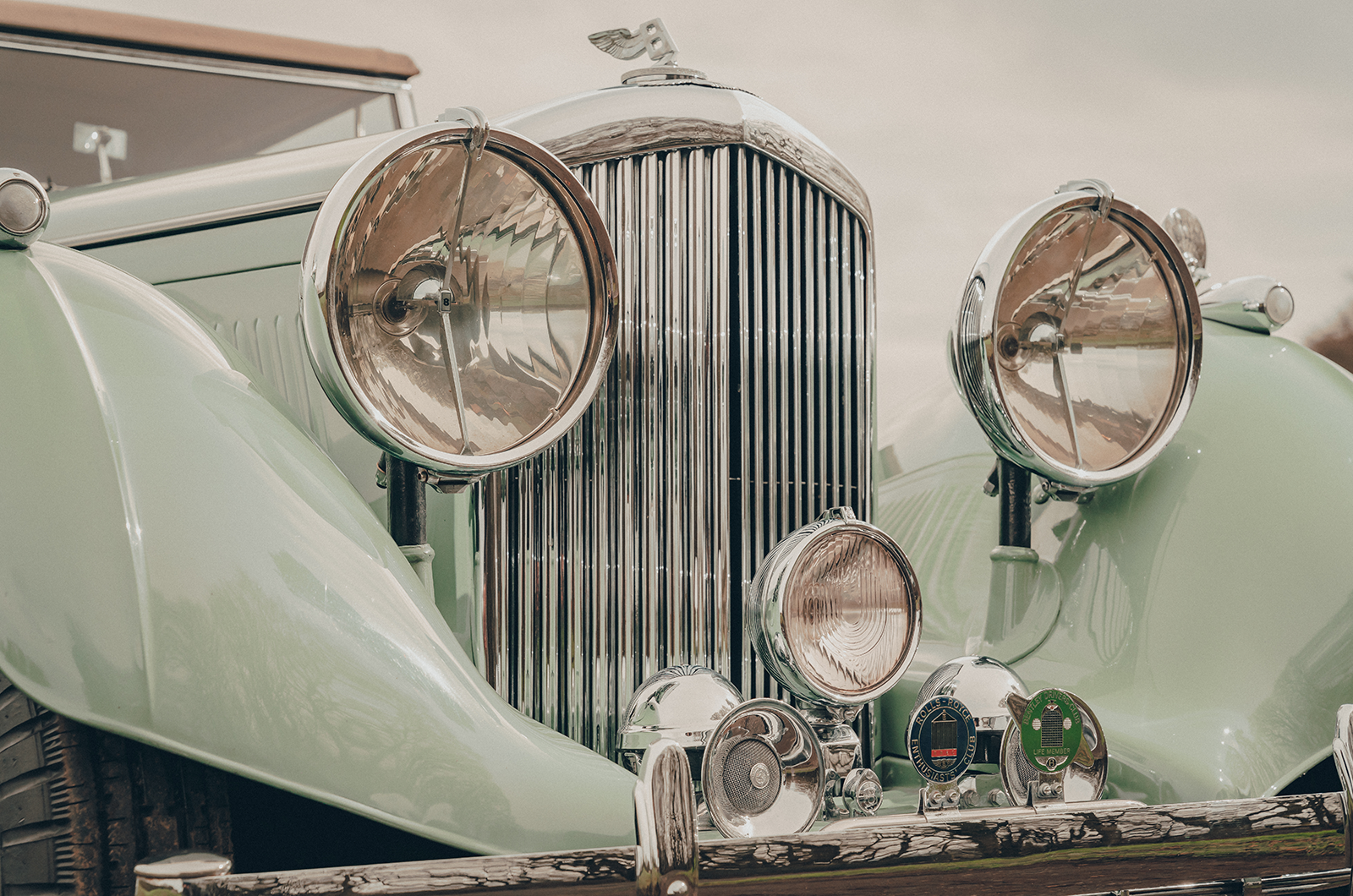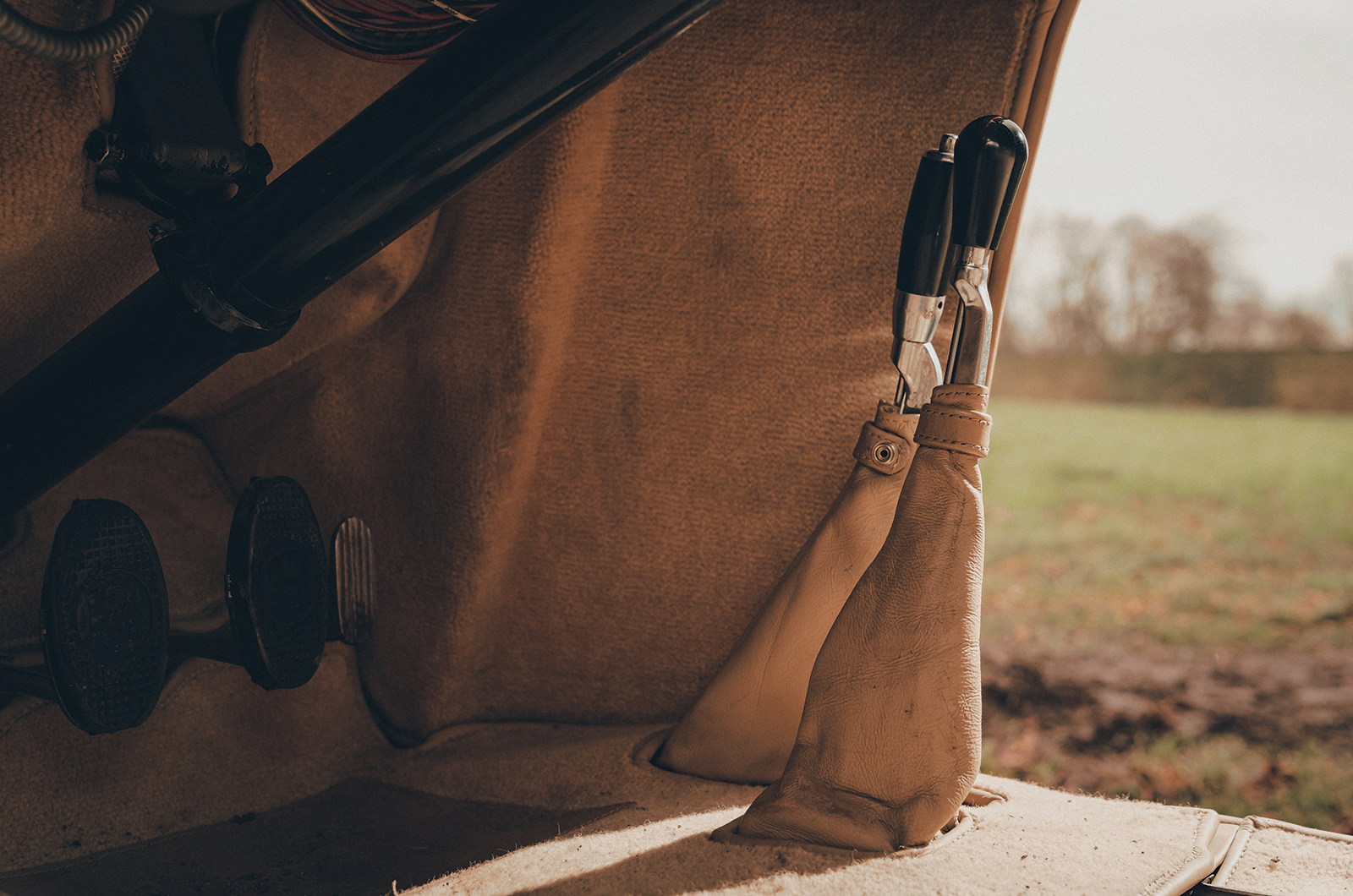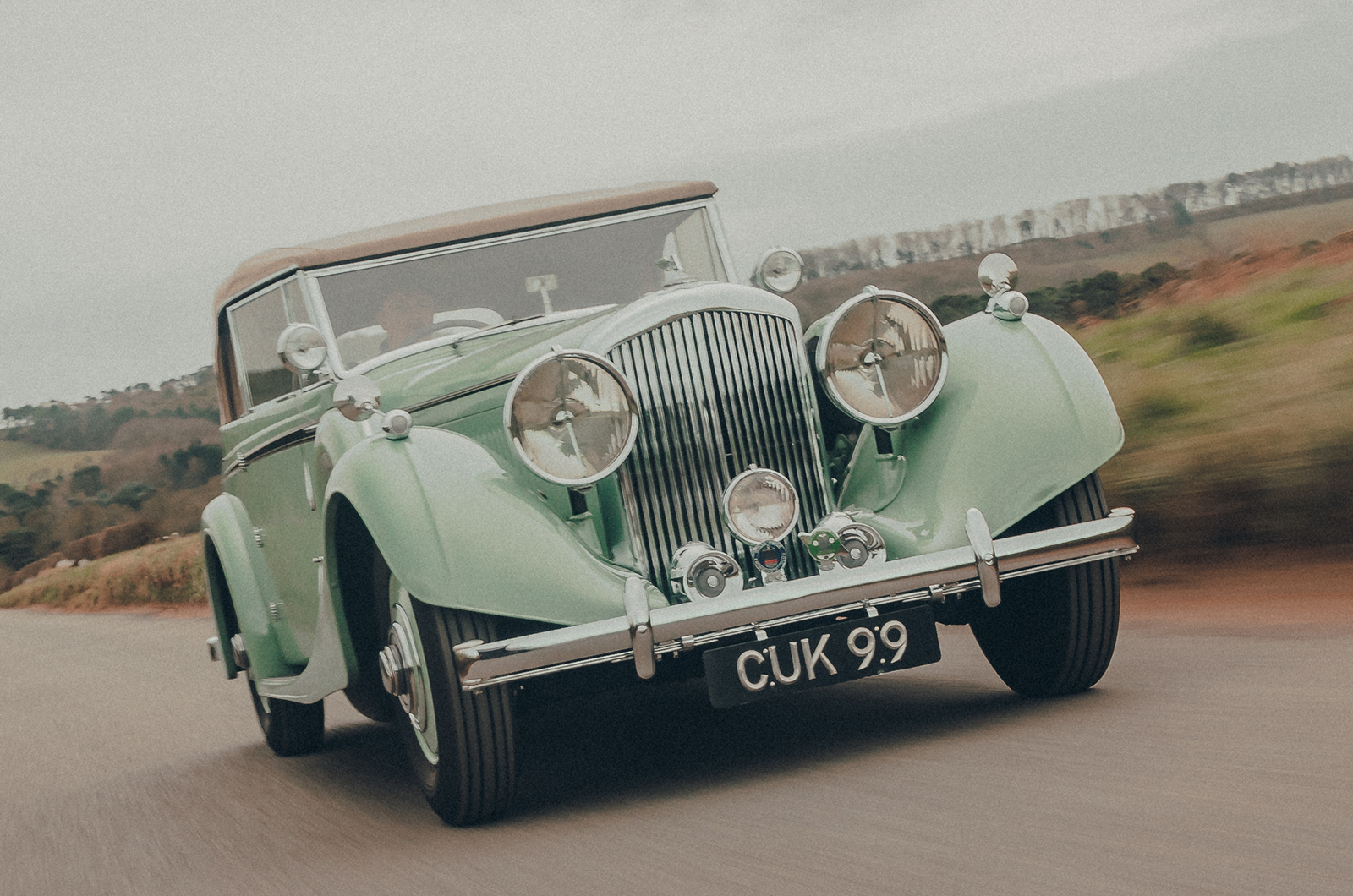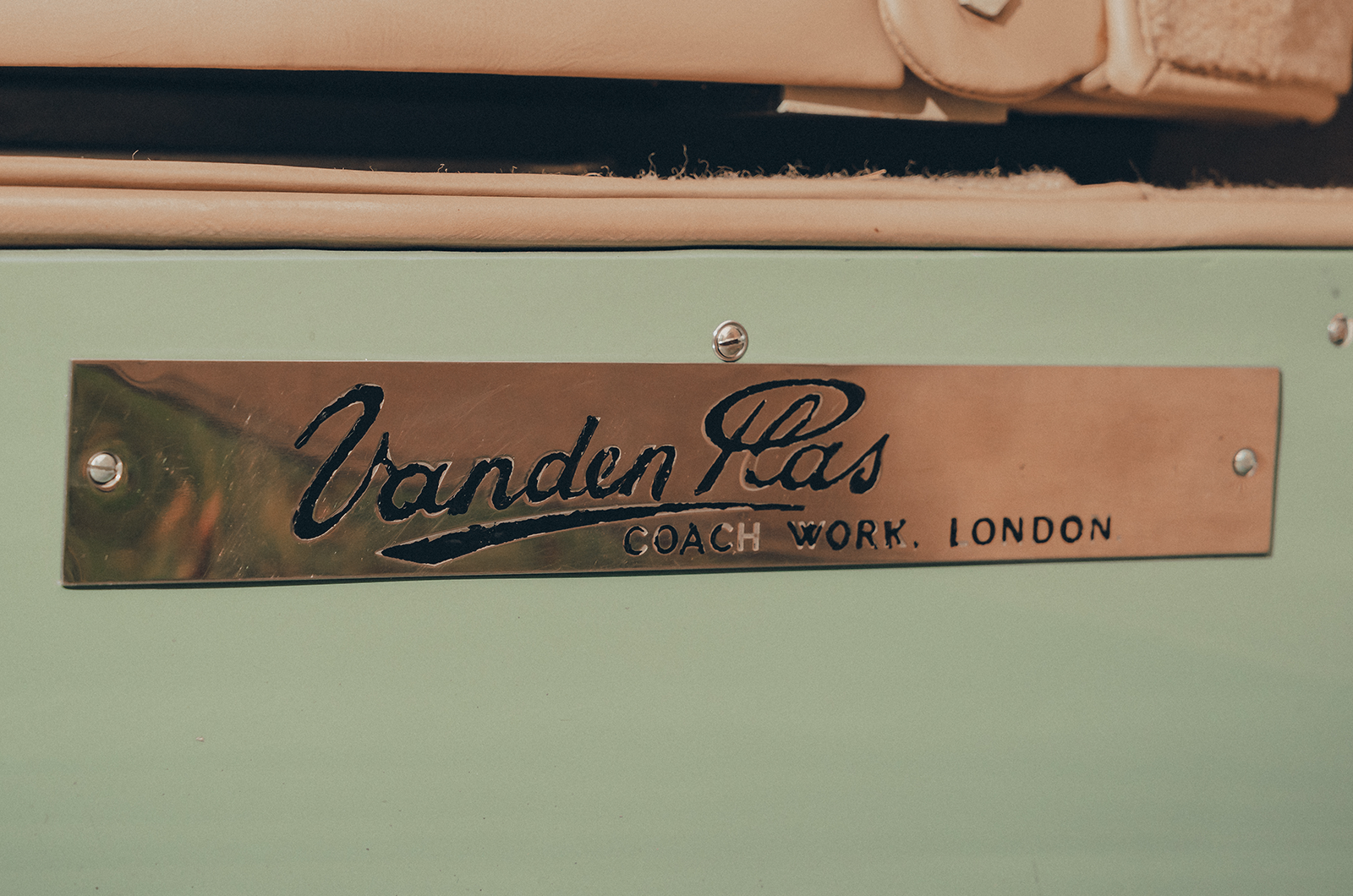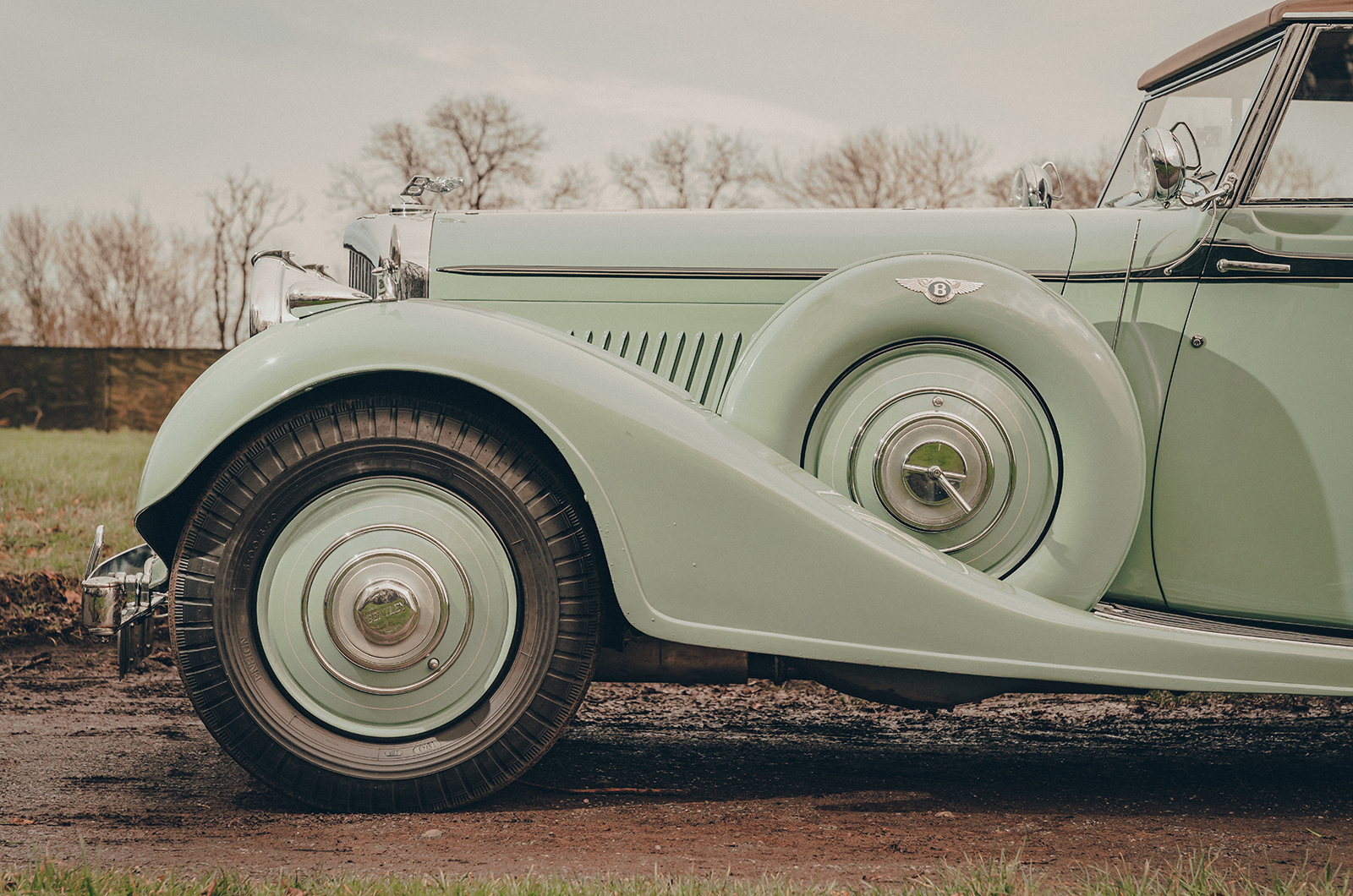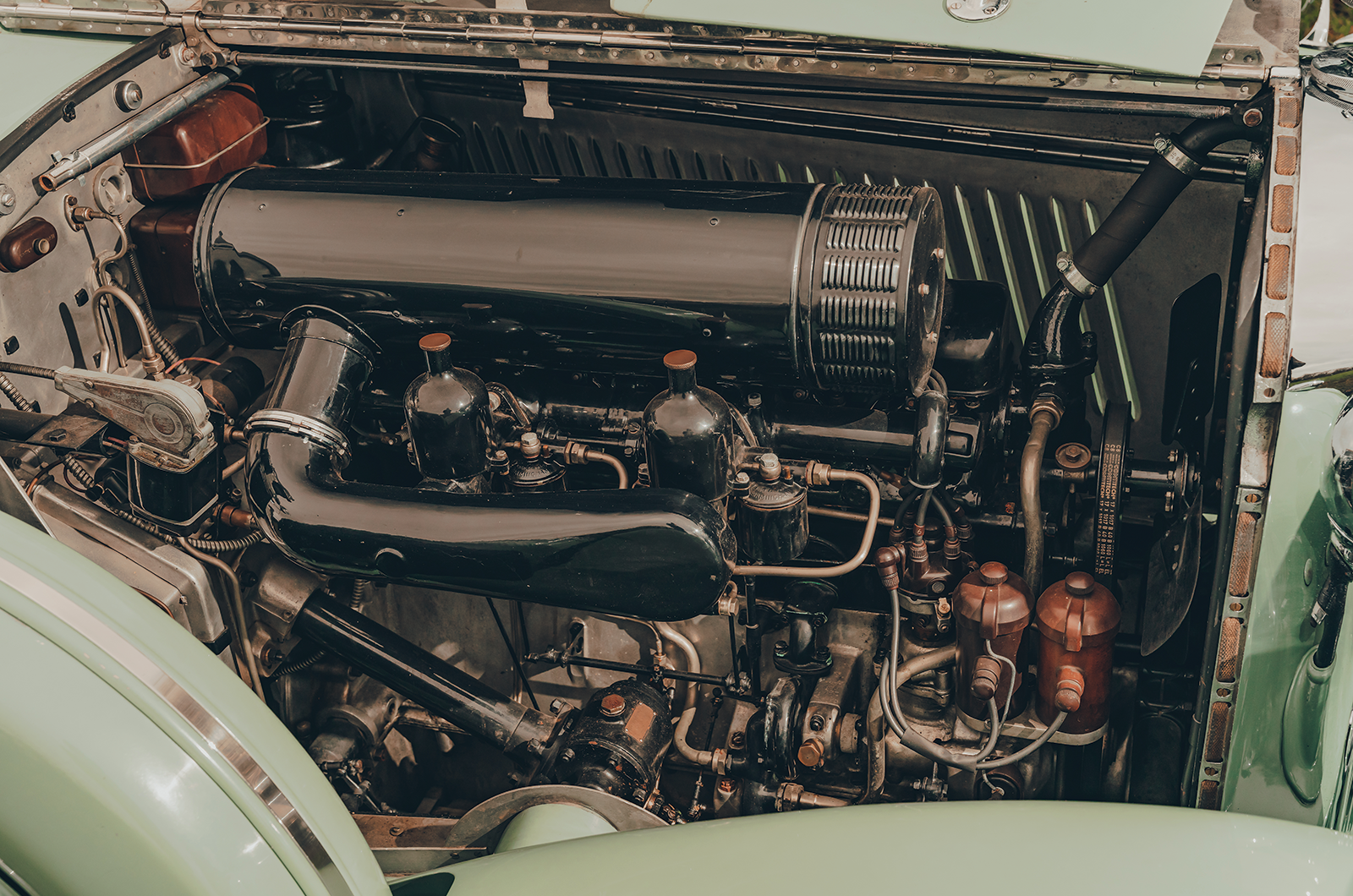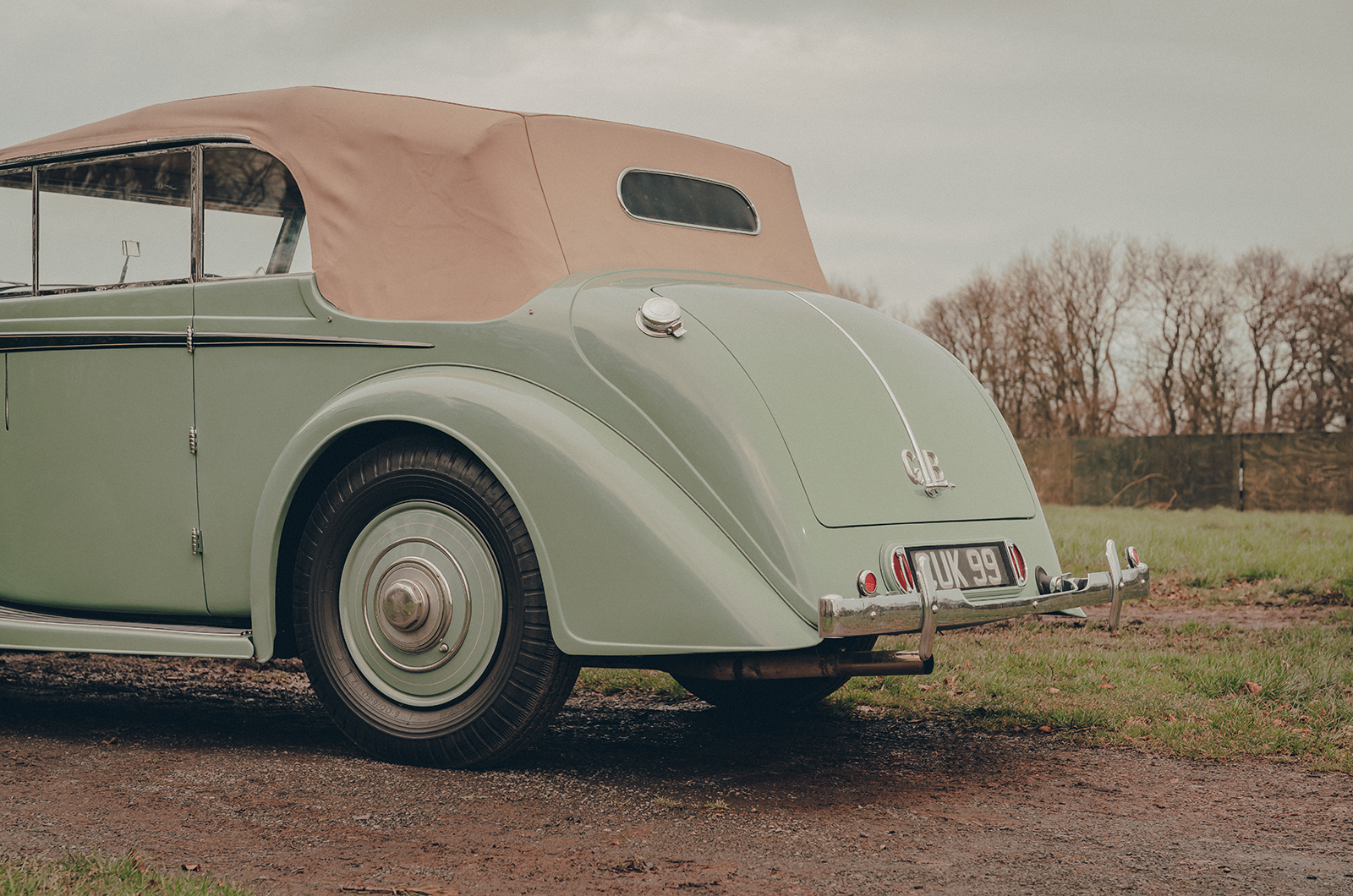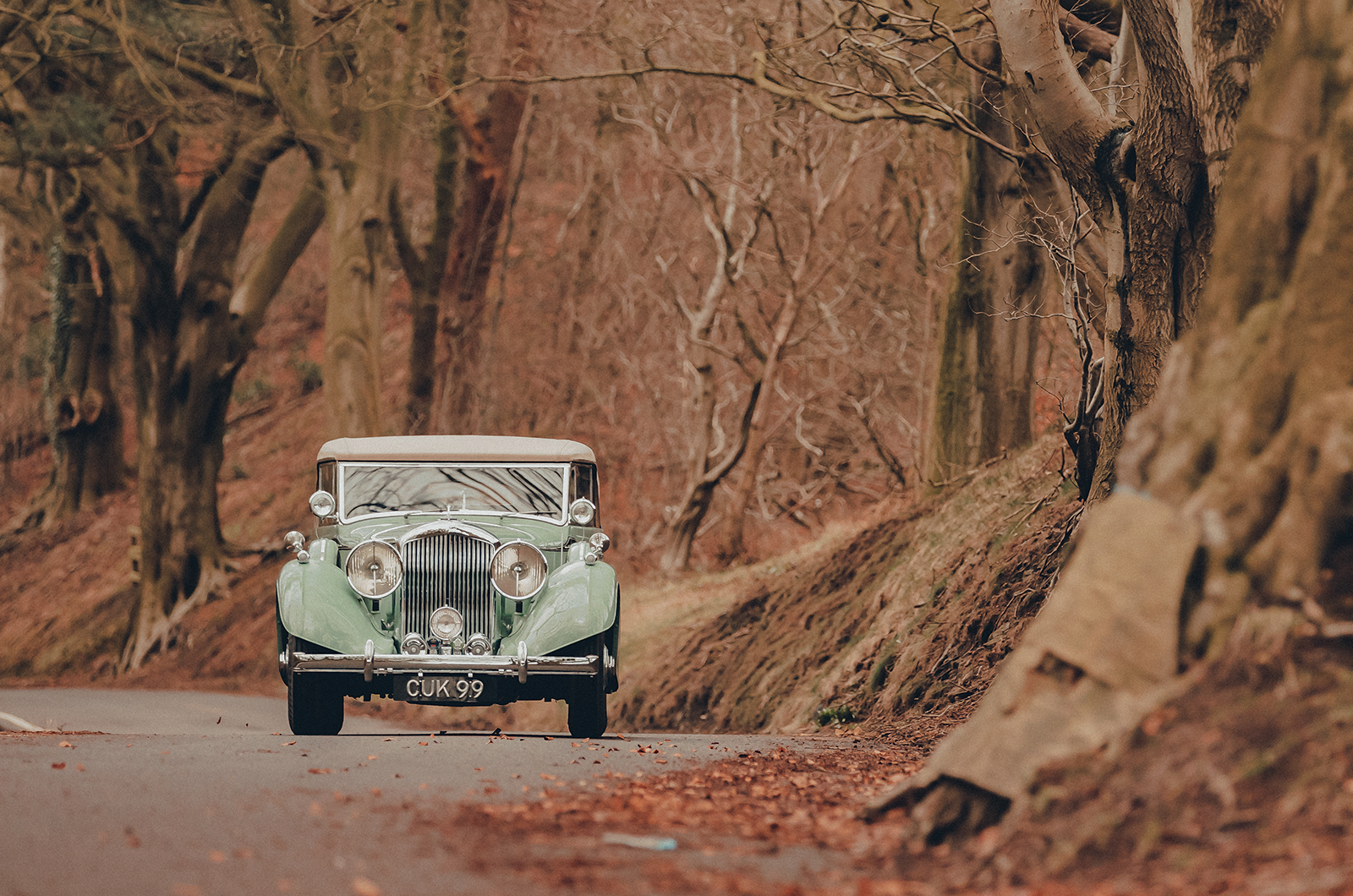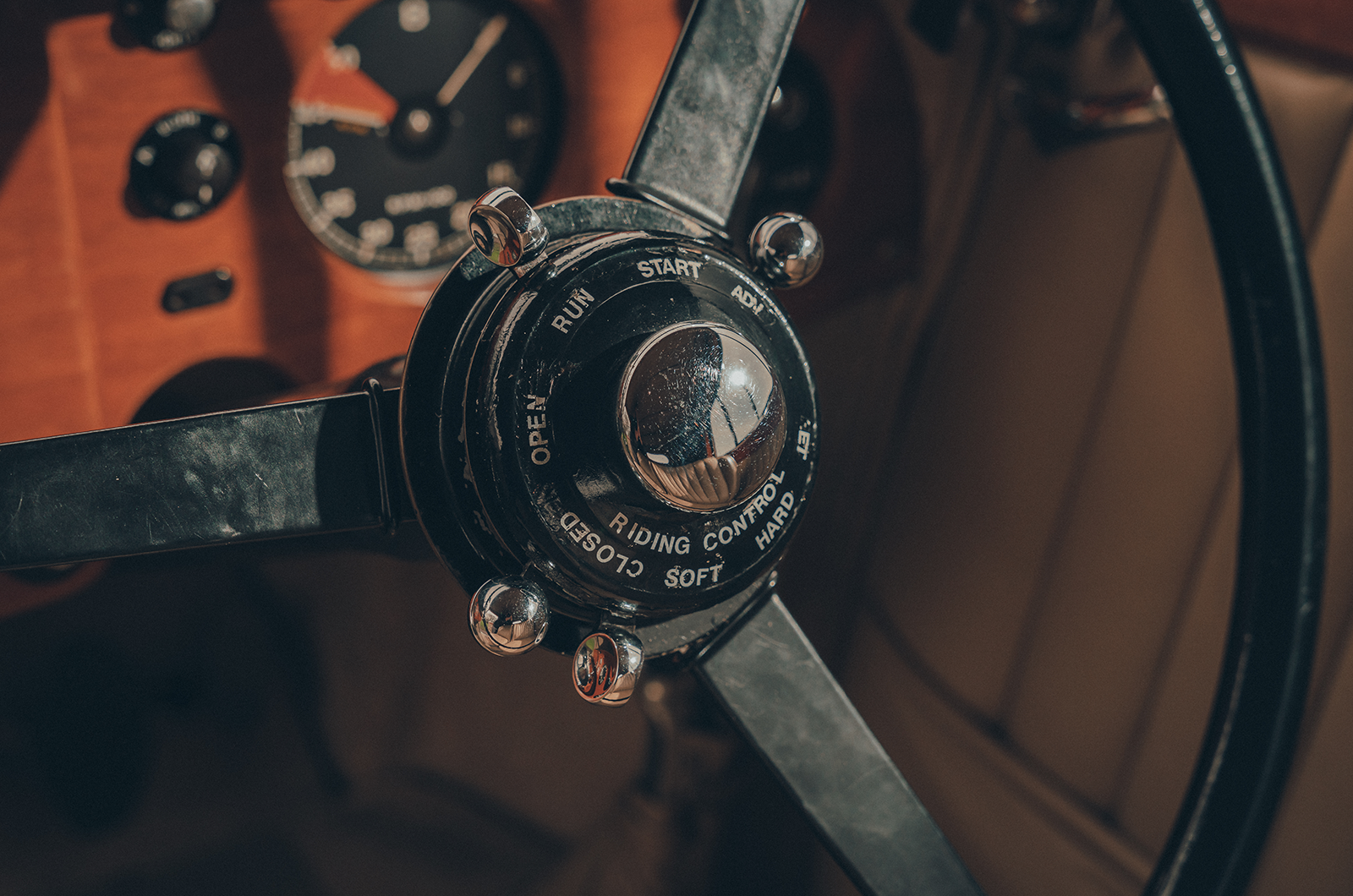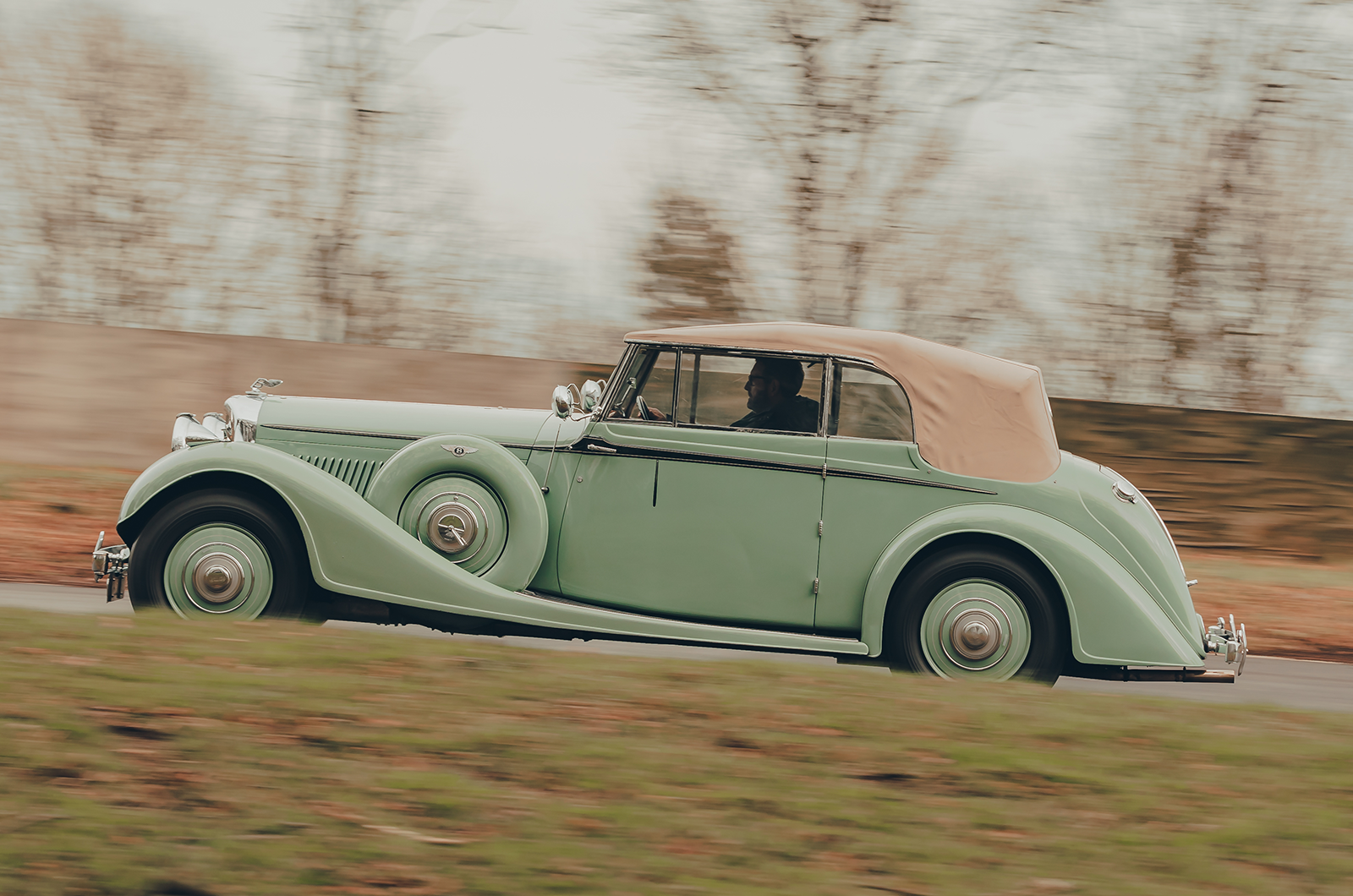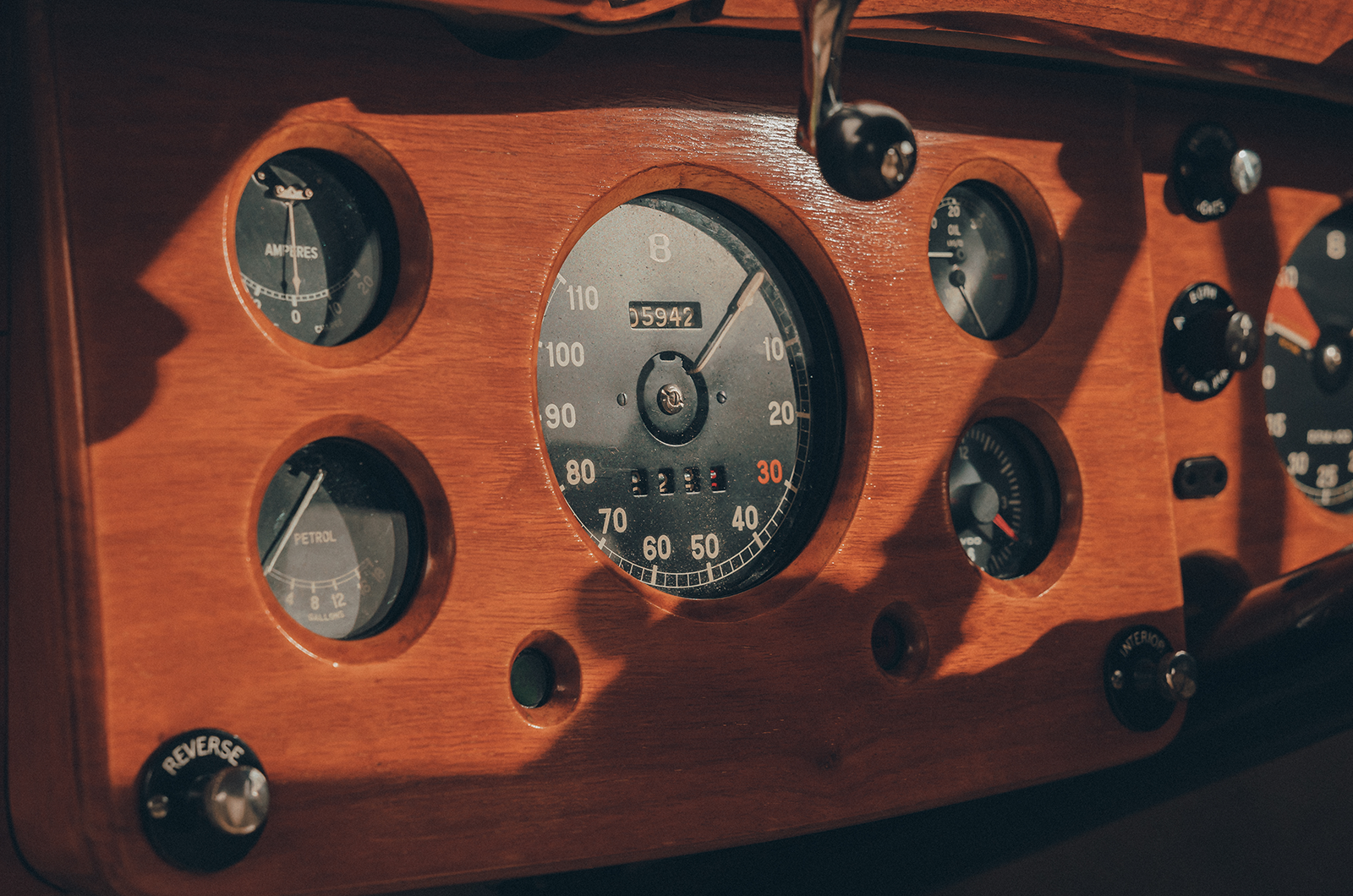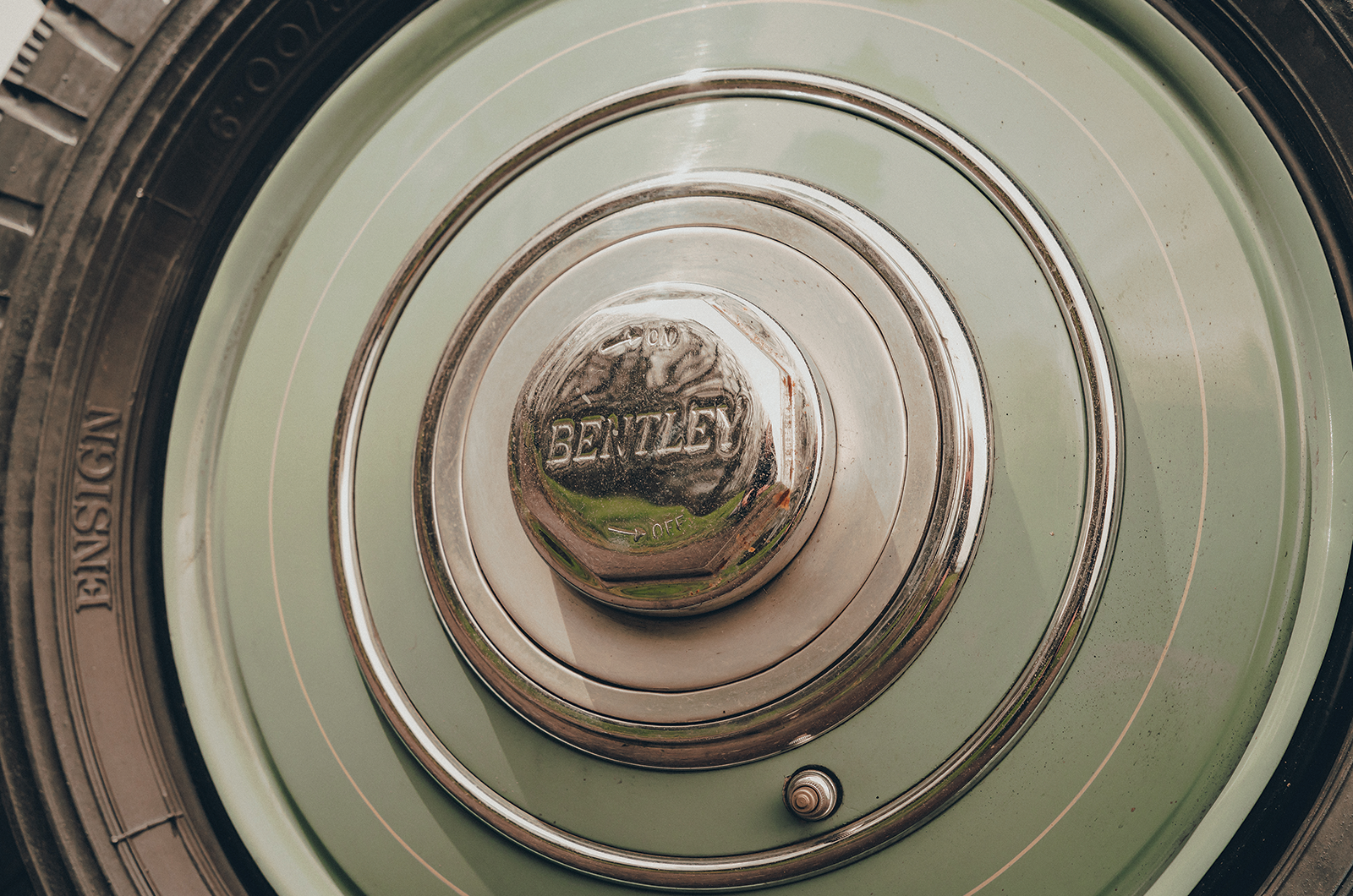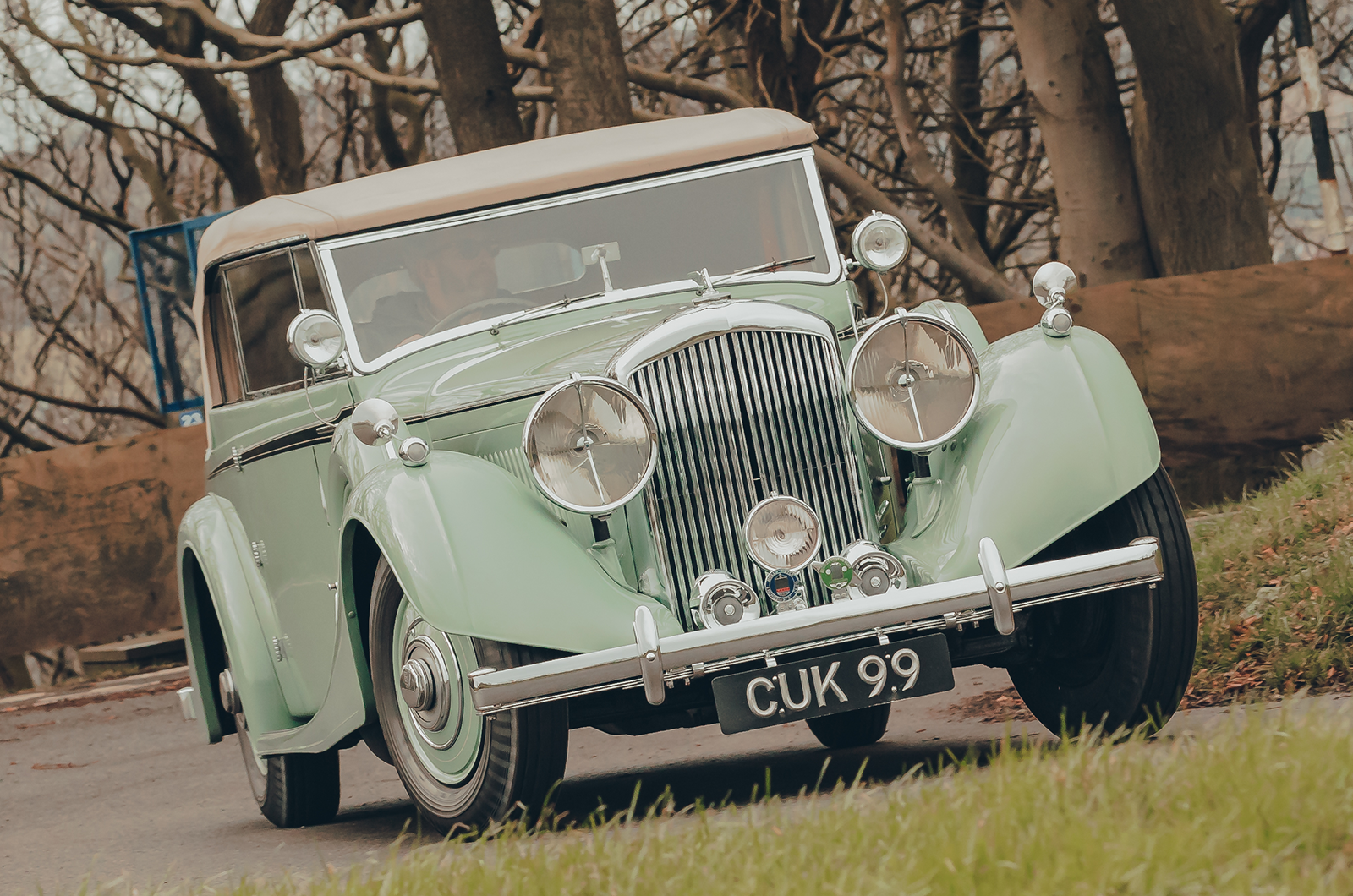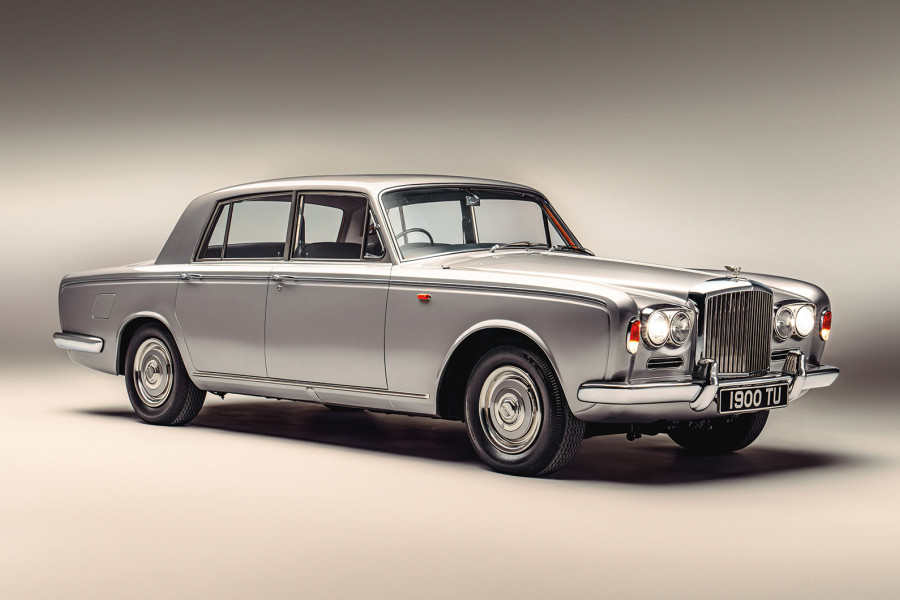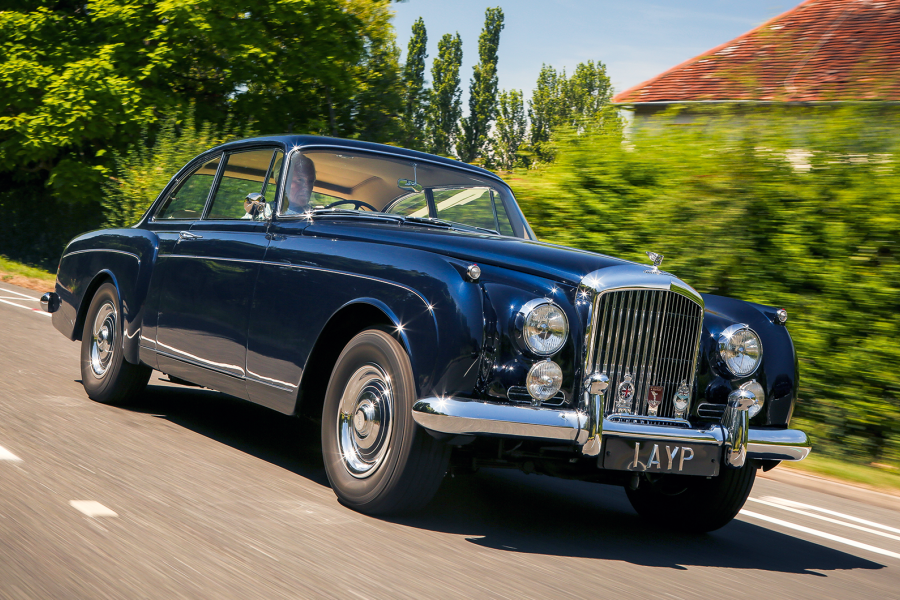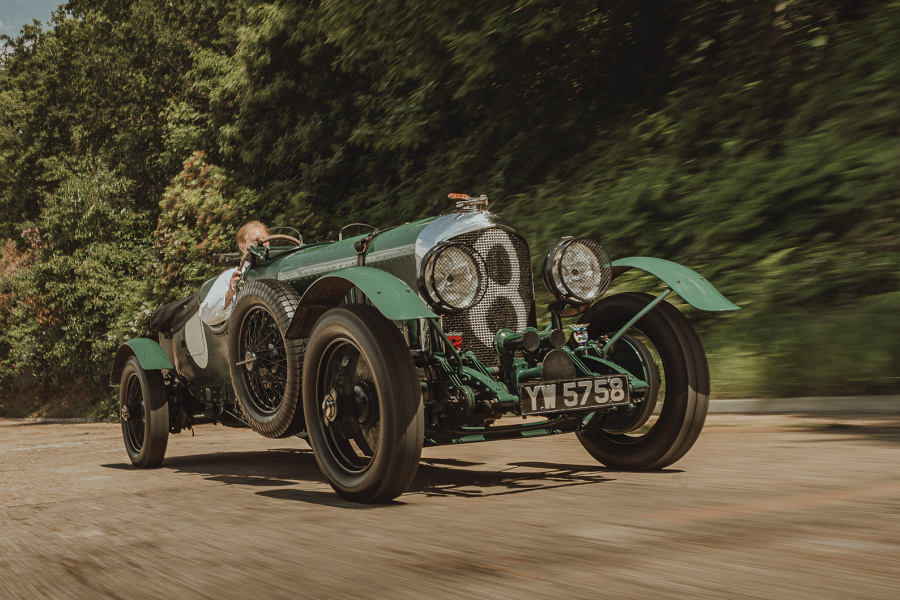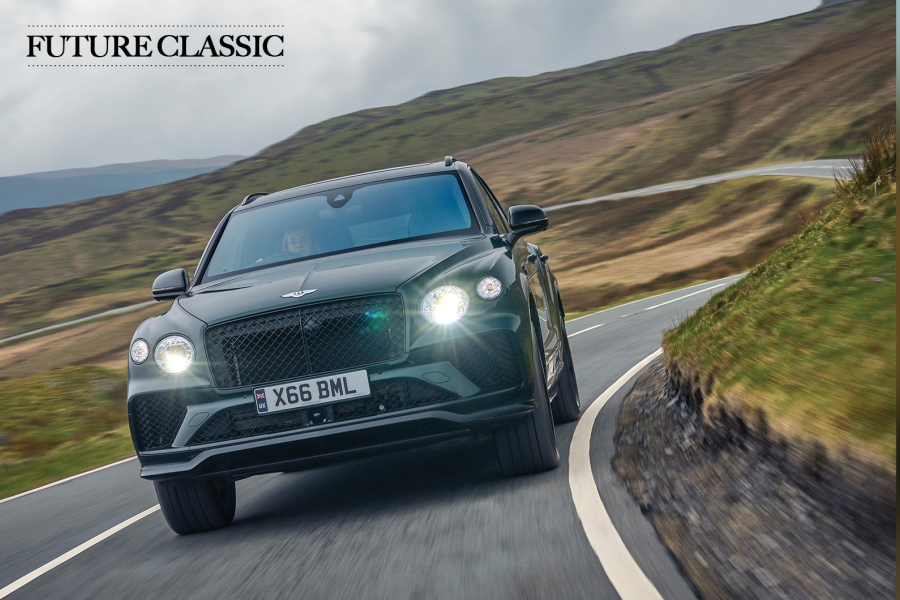Within the lifetimes of those who owned these cars new 80 years ago, the automobile had gone from a wheezing and unreliable plaything to a dependable friend that would take you anywhere.
Uncompromisingly engineered for reliability, the ‘silent sports car’ added to this formula an ease of use and a lack of fuss that motorists (even rich ones) could only have dreamed of two decades earlier.
This VdP-bodied car still lives up to that promise. Turn the tiny key, press the button and it starts without a stutter.
With its simple exhaust manifold, twin SU carburettors and giant airbox, everything about the presentation of the deep, square, enamel-black engine is about suppressing possible sources of noise.
‘Commanding top-gear stride pulled it into the 80s while proletarian vehicles struggled to maintain 50mph’
The exhaust note is an aspirant mutter that talks of refinement and expensiveness to the outside world, rather than ultimate power.
There was real urge here, though, by late-’30s standards: 125bhp, with a commanding top-gear stride that would pull this car decisively into the 80s and beyond, while proletarian vehicles struggled to maintain 50mph.
It still feels lively, and no embarrassment in modern traffic. The straight-cut first gear is optional, second being sufficient for pulling away briskly on the flat.
The right-hand change is positive and forgiving, the brakes amazingly strong and predictable, boosted by the usual Rolls-Royce gearbox-driven servo.
The Bentley’s steering wheel also controls the ride settings and the choke
Well-judged damping belies the primitive-sounding beam axles and leaf springs to produce a big car – with a not-very-stiff chassis – that handles reassuringly and forgivingly, with pleasantly direct and friction-free steering.
Motoring was no longer exclusively for the rich in 1938, but only the well-off could afford this kind of effortless travel to pull them away from the hordes along arterial roads that were still relatively deserted.
Its ability to climb hills rapidly and sparkling pick-up would have been outside the experience of most drivers.
Eight decades ago, this Bentley was one of few cars in which 400 miles in a day was a comfortable jaunt between breakfast and dinner, rather than an exhausting thrash.
The Bentley 4¼-litre Vanden Plas drives well, despite its rudimentary beam axle and leaf springs set-up
How nice it must have been to have motored – people always ‘motored’ in the ’30s, rather than merely drove – out of London on quiet early-morning streets, pointing the massive headlights along the Great North Road, anticipating arrival at your Lancashire tripe factory by mid-morning and being deep into Scotland by early afternoon.
Even at a price (typically c£1500 including coachwork) that would have bought three average-sized houses, the Derby Bentley all but created its own market between 1933 and 1939.
Its mixture of superb build quality and 90mph performance combined with Rolls-Royce refinement made its position unassailable.
Some rivals could match its pace – depending on the coachwork – but nothing could beat the aspirational appeal.
The speedo reads to 110mph, but the Bentley 4¼-litre Vanden Plas tops out at 100mph
For fast, dependable yet restful transport, the Derby was the car to have in an age when Rolls-Royce engineering was as near to a guarantee of reliability as you were likely to get.
The works could barely keep up with orders for this new breed, which outsold its competitors two-to-one (despite costing twice as much), yet with no significant effect on the sales of existing Rolls-Royce models.
It had the presence and dignity for formal occasions when you might engage a chauffeur, but wasn’t so unwieldy you wouldn’t take the wheel: the ideal combination for a generation who didn’t feel they were old enough to drive a Rolls-Royce just yet, but wanted something fast and undemanding.
The ‘Derby’ Bentley’s discreet wheel discs contrast with the exposed wires of ‘WO’-era cars
Anyone who could afford one bought one, from ukulele-plucking comic George Formby and band-leader Billy Cotton to Earl Howe and Sir Malcolm Campbell.
All were enthusiastic owners of this conception of what a Bentley for the 1930s should be: not a lumbering locomotive, but a swift touring machine created around the technology evolved for the small-horsepower Royces.
Even WO Bentley approved.
He famously – and very fairly, given his poor treatment at the hands of R-R – judged it the best car produced under his name up to that point.
Images: Max Edleston
Thanks to: Classic & Sportscar Centre
Factfile
Bentley 4¼-litre Vanden Plas
- Sold/number built 1936-’39/1234 (all 4¼-litres, 201 MR/MX-series)
- Construction steel chassis, aluminium body on ash frame
- Engine iron block and head, alloy crankcase, ohv 4257cc straight-six, twin SU carburettors
- Max power 125bhp @ 4500rpm
- Max torque not quoted
- Transmission four-speed manual with direct third and overdrive top, RWD
- Suspension: front semi-elliptic leaf springs rear live axle, semi-elliptic leaf springs; hydraulic dampers f/r with driver override
- Steering cam and roller
- Brakes finned drums, with servo
- Length 14ft 6in (4420mm)
- Width 5ft 9in (1752mm)
- Height 5ft 2in (1574mm)
- Wheelbase 10ft 6in (3200mm)
- Weight 3752lb (1702kg)
- Mpg 17
- 0-60mph 15.5 secs
- Top speed 96mph
- Price new £1150 (chassis only, 1938)
- Price now £180,000*
*Price correct at date of original publication
Enjoy more of the world’s best classic car content every month when you subscribe to C&SC – get our latest deals here
READ MORE
Derby Bentleys: 90 years of brilliance
Lagonda V12 Rapide: WO Bentley’s masterpiece
Bentley Arnage, Bentley Arnage T and Rolls-Royce Silver Seraph: one car, three engines
Martin Buckley
Senior Contributor, Classic & Sports Car
